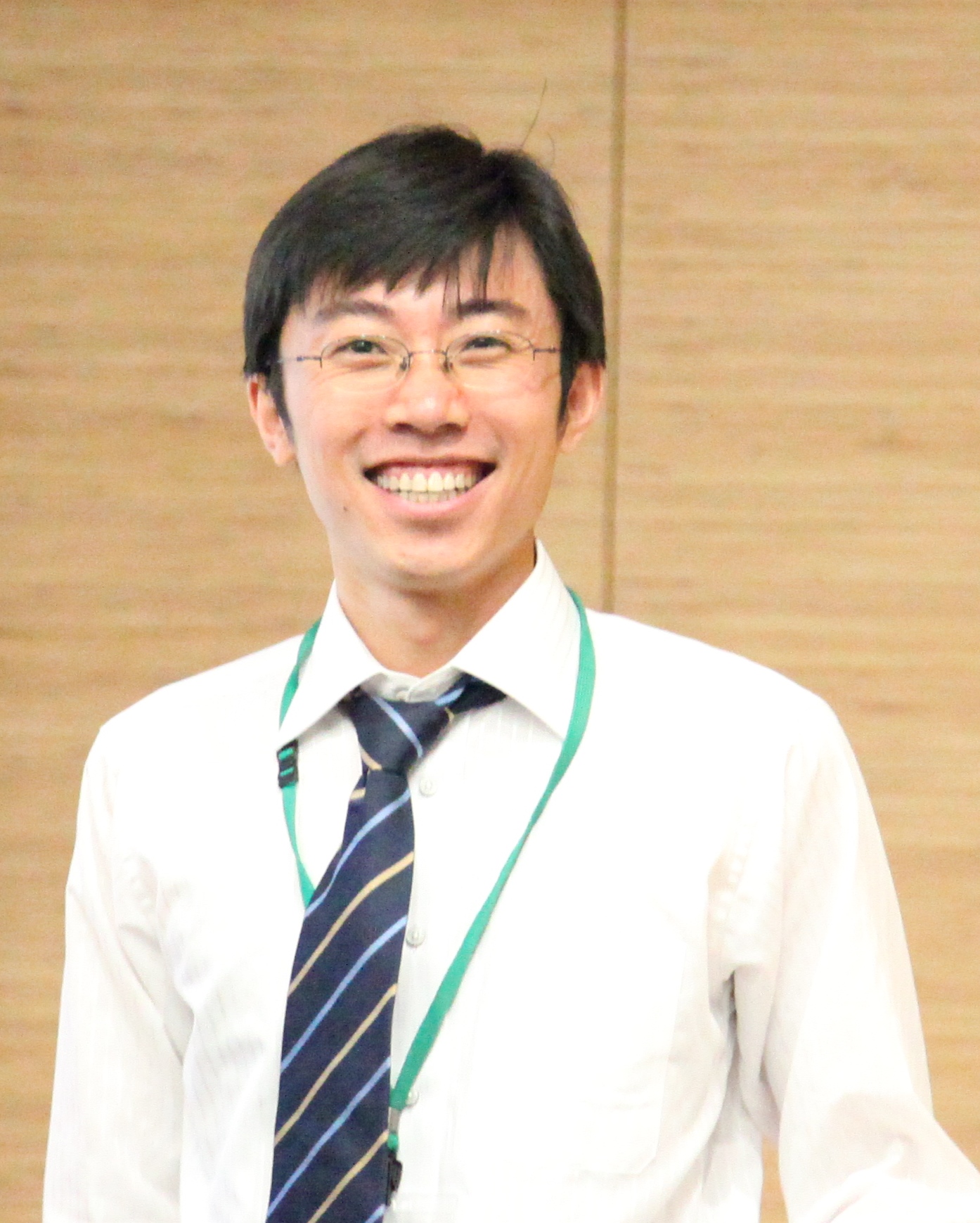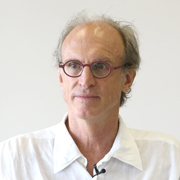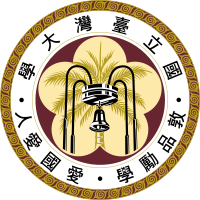【宏觀視野】First UBIAS Intercontinental Academia: An Unparalleled Intellectual and Interdisciplinary Adventure
First UBIAS Intercontinental Academia:
An Unparalleled Intellectual and Interdisciplinary Adventure
Dapeng Cai (Nanzan University) and Martin Grossmann (University of São Paulo)


How to produce a concrete impact in the globalized academic scenario considering the nature and potentialities of a recent established network of University Based Institutes for Advanced Studies? What can be done to enhance the role and profile of Institutes of Advance Studies worldwide? How to contribute in the shaping of the university in the future? These and other questions were fundamental for the launching of a new intercontinental academic platform for interdisciplinary research and interchange.
A Long Road to São Paulo
Intercontinental Academia (ICA), organized by UBIAS (University-Based Institutes for Advanced Studies, www.ubias.net), is a “2+2+2+2” initiative that consists of 2 2-week long interdisciplinary workshops that are to be organized by 2 institutes of advanced studies of 2 continents.
This unique idea was proposed by Eliezer Rabinovici, the then director of the Israel Institute for Advanced Studies at the Hebrew University of Jerusalem (IIAS), during the UBIAS Steering Committee conference held in March 2012 at the Institute for Advanced Study, Jawaharlal Nehru University. The idea includes around 20 junior members who would be selected as participants based on the recommendations from the UBIAS member institutes. They would participate in the two workshops, and conduct interdisciplinary collaborative joint research on a common theme under the guidance of a Senior Academic Group, who would plan and supervise the execution of a program that involves lectures, debates, discussions, and cultural events.
ICA will be guided by three goals: (i) to stimulate joint interdisciplinary research among UBIAS member institutes; (ii) to establish cooperation networks among the next generation’s scientific leaders; and (iii) to explore new forms of collective academic practices and new formats of scientific training, collaboration and dissemination. Its aim is to foster networks of leaders of the next generation through lectures, readings, immersive workshops and discussions, besides sharing experiences, and participating in intercultural activities and social programs. Investing particularly heavily in young scientists from various academic disciplines, it is expected to promote scientific exchange between generations, disciplines, cultures and continents.
The Institute for Advanced Studies at the University of São Paulo (IEA-USP) and the Institute for Advanced Research at Nagoya University (Nagoya IAR), both inspired by the potential of ICA, agreed to examine the feasibility of jointly hosting the pilot project for this initiative as a joint venture. Being an unprecedented endeavor, it encompasses a number of rather “risky” elements, and it took both sides an extended period of internal review and discussion to formally grant the joint “go” sign by the end of 2012. Saito Susumu and Dapeng Cai from Nagoya IAR visited the IEA-USP in February 2013, where they discussed the perspectives of the project with representatives of USP's Agency for National and International Academic Cooperation, members of IEA-USP's Board and members of research groups of the institute. It was at this meeting that both sides formally agreed to the “2+2+2+2” concept and the theme “TIME”.
The 2nd UBIAS directors meeting held at the Hebrew University of Jerusalem in March, 2013, marked the official start of the project. The organizational and scientific concept of the ICA were extensively discussed and approved by the delegates of the participating institutes. There was also unanimous support for all the measures and plans reported by the two hosting institutes, and they were encouraged to continue preparations and to take any decisions necessary for the successful realization of the ICA. It was also at this meeting that the theme “TIME” was formally adopted.
Then, after extensive distribution through UBIAS, the conference of the network in September 2013, held at the Peter Wall Institute for Advanced Studies of University of British Columbia, reserved a special place in its agenda for the presentation and discussion of the project. At this occasion, the directors of both IEA-USP and Nagoya IAR also signed a memorandum of understanding. Moreover, recognizing the need to provide institutional support from the network, Carsten Dose, Managing Director of the Freiburg Institute for Advanced Studies of the University of Freiburg (FRIAS), became General Secretary of ICA. It was also agreed that a three-member scientific coordination should be constituted representing the three continents involved in this venture. So, representing East Asia, Tadao Kondo was suggested by Nagoya-IAR, Regina Markus for the Pan-American axis by IEA-USP and Till Roenneberg for Europe by UBIAS steering committee. Coincidently three internationally recognized chronobiologists that nevertheless invest in different branches of chronobiology.
In April 2014, Martin Grossmann and Regina Markus of USP, visited Nagoya IAR, where both institutes frankly discussed issues of their respective concerns. Both sides presented their ideas and plans for their respective workshop, followed by rather painful adjustments so that the two workshops could remain a coherent framework to the participants. This proved to be a great challenge to both sides, yet incredible amounts of consensus emerge from the discussions. The “2+2+2+2” concept was materialized, the schedule for the open call, as well as the dates for the two workshops, was fixed, and both sides agreed to the design of the logo for ICA. With the approval of UBIAS, the senior academic group, consisting of 7 members, has also been appointed.
The open call started in June 2014. Each one of the 34 UBIAS-member IASs has indicated, on average, three names of high relevance among young researchers in their locality. From this group of approximately 100 names, 15 have been selected, keeping the proposal to establish a mosaic of different areas of knowledge and nationalities.
From September 18 to 21, 2014, FRIAS hosted the first meeting of the ICA's Senior Committee. It was attended by Regina Markus and Martin Grossmann from IEA-USP, Takaho Ando, Takao Kondo, and Dapeng Cai, representing the IAR; Carsten Dose, Hermann Grabert and Bernd Kortmann, from the FRIAS, the last two being academic directors of the institute; Till Roenneberg (LMU-Munich), Eliezer Rabinovici (via Skype), and Sami Pihlström (University of Helsinki) (also via Skype). Among the decisions taken by the committee during the meeting, a new proposal by Till Roenneberg, that as a product of both immersive workshops, a Massive Open Online Course (MOOC) should also be created, besides the formation of international research networks, the development of cooperative research program and possible publications, was also adopted.
The Senior Academic Committee gathered again during the UBIAS Directors Meeting in Taipei, from November 27 to 29, 2014. The second and final stage of the selection of 15 participants was resumed at this occasion. In September, 10 names were chosen. In order to ensure the formation of a plural group, composed of scientists from different continents, countries, cultures and academic traditions, the decision on the other five participants was postponed until there was time for newcomers to sign up. The second group of selected candidates has intensified the participation of researchers from the region of East Asia, increasing the representation of natural sciences and oriental culture in the initiative. These efforts concluded the selection process in the first half of February 2015.
Two Magic Weeks in São Paulo
It was indeed a great challenge staging, for the very first time, an immersive interdisciplinary encounter between senior and young researchers from different continents having as guidelines the “2+2+2+2” initiative of the ICA. As already reported above, this demanded a long run that nevertheless allowed the organizers to discuss the designing process of the event between them and by also receiving important suggestions by members of UBIAS. For assisting Regina Markus and Martin Grossmann in the design of the Sao Paulo program, the constitution of the ‘intercontinental’ Scientific Commission (UBIAS) was fundamental as also the local (USP) scientific commission, plus the scientific coordination mentioned above. Rather then considering it a conference, a seminar or a summer school, it was decided that each immersive and intensive 2 weeks encounter should be developed of as a comprehensive workshop, a platform or laboratory that would enable the promotion of elemental processes for the development of science and knowledge, among them: exposition, listening, debate, exchange, interaction, sharing, questioning, criticism, etc. Thus, the premises for developing this two-week-long interdisciplinary platform in Sao Paulo (April 17-30, 2015) were: (i) the context, by understanding that today universal institutions such as universities are at the same time global and local, thus having particularities that are important to be explored and shared; (ii) the future of the university, since one of the intends is to engage young researchers in this continuous critical updating and modeling of a secular institution; (iii) the theme (time) itself, insofar interdisciplinary debates might allow new understandings, and (iv) collective thinking or ‘thinking together’, since the ambition of ICA is to collaboratively design transformative models, amidst them the MOOC itself insofar it will be an intercontinental, interinstitutional and interdisciplinary online course freely available on Coursera. Regarding the Sao Paulo program, these guiding lines were transformed into axes that were then orchestrated in the schedule that happen along 13 days (120 hours), from morning to evenings. It is important to say that all 13 young participants stayed in the same hotel, as the invited lecturers too, fostering further informal gatherings and debates. This enhanced engaging coexistence and even friendship amidst them.
The São Paulo workshop started on the 18th of April with the contextual axis that explored the University of Sao Paulo’s relationship to this megacity that is Sao Paulo. For two days the participants drove through parts of the city with a confortable bus and the assistance of a team of scientists that show how USP is really fundamental in the historical and ongoing shaping of this city, be it in relation to public health, public policies, infra-structure, culture, etc. They were also confronted with the difficulties and flaws of this ongoing complex urban process. From Monday 20th to Wednesday 22rd the group was in touch with different perspectives on time, coming from the Arts, Humanities, Hard Sciences, Biological Sciences and Social Sciences. The time axis received therefore the invaluable contributions of 17 invited speakers (all contributions are available in the site). As a counterpoint to these expositions a critical debate on the future of the university was staged: the University Axis. The start up for this debate was a Master Class of Jose Goldemberg, USP's President in mid 80’s, Education Minister of State of Brazil also in the 80’s and the central figure in the constitution of the IEA-USP. Regarding the role that USP has in the shaping and promotion of public policies in Brazil two important facts happen before the opening of ICA in Sao Paulo: two of ICA’s scientific committee members have became central figures in the scientific and educational national levels: Professor Hernan Chaimovich was appointed President of the CNPq - National Council for Scientific and Technological Development and Professor Renato Janine Ribeiro Education Minister of State of Brazil. Both offered substantial contributions to the program. Last but not least a debate on this theme brought together five university presidents from Brazil and one from the UK (Birmingham University).
From the 25th to 29th of April, the final part of the encounter in Sao Paulo was organized by fostering group dynamic experiences. It was the time for the 13 young researchers to perform and assume a leading role, having as a final aim the development of a proposal for the concept and structure of the MOOC on time. In a final plenary session on the 29th of March the proposal was presented to the group to be further developed in the next stage: Nagoya immersive meeting 7 to 18th of March 2016.
Two other outputs of the Sao Paulo immersive encounter deserve attention since they sum up the endeavor: (i) a publication that was released by the time of the encounter in Nagoya that brings together texts produced by the critical rapporteurs (four post-doc researchers from Latin America that followed all the activities) and IEA-USP’s communication team reports on the activities, and (ii) a short movie of 13 minutes produced by our invited audiovisual critical rapporteurs. The website offers multiple access to this memorable occasion!
In November 2015, following the invitation of the Center for Advanced Studies (CAS) at the Ludwig-Maximilians-Universität München and also supported by FRIAS, some of participants attended a two day workshop in Munich, where the participants were provided the opportunity to discuss their joint work, as well as to comment on the program of the Nagoya Workshop. Till Roenneberg also invited some of the participants to his lovely farm in southeast Bavaria for further discussion.
Nagoya and Beyond
The two-week-long Nagoya workshop, March 7-18, 2016, was divided by three integral parts: roughly 1/4 of the time was for a new round of academic talks/lectures that would give the participants new stimuli, another roughly 1/4 for social activities that introduce the participants to the Japanese culture, as well as the Japanese society and its problems, whereas the next 1/2 was reserved for the participants to work on their own.
Nagoya Workshop starts with two Master Classes, given by Nobel Laureates Toshihide Maskawa and Ryoji Noyori, followed by a keynote speech on “Higher Education and Academic Research in Japan” by Michinari Hamaguchi, President of JST and former President of Nagoya University. Four workshops, a biology workshop, a physics workshop, a humanity/social science workshop, and an art workshop, was arranged for the following days. Altogether 26 lectures/talks were delivered, which were also actively attended by members of Nagoya University. Nobel Laureate Hiroshi Amano also joined the group for lunch.
On March 11, the young participants discussed their encounter with interdisciplinary research at a symposium titled “Interdisciplinarity: Benefits and Challenges of the Intercontinental Academia.” The progress made during the various discussions and workshops by the participants at Nagoya workshop was reported during the final presentation on March 18, where the participants also presented the roadmap for MOOC.
Nagoya workshop also included a one-day visit to WIAS (IAS at Waseda University), Zen meditation and a Japanese tea ceremony. A Panel Discussion on the Future of UBIAS was given on March 11, following a keynote speech entitled “The Development of Institutes for Advanced Study and their Role in the Contemporary University,” which was given by Peter Goddard, the Former Director of the Institute for Advanced Study in Princeton.
The participants continued their cooperation concerning the MOOC after the Nagoya Workshop. The final version of the MOOC script was presented to the Senior Academic Committee in December 2016. The two host institutes also managed to gather the needed financial resources for the shooting of the MOOC, which is currently scheduled for March, 2017.
In the meantime, the second ICA, jointly organized by IIAS and Center for Interdisciplinary Research at Bielefeld University (ZiF) under the theme “Human Dignity,” was also successfully completed in August, 2016.
Road Ahead: A Reflection
The large number of favorable feedbacks from the participants, the lecturers, the faculty members from two host universities, as well as the attention received by the local media, seem to suggest that the first ICA can be largely regarded as a success. Possible reasons behind the success include: (i) The concept of ICA was clear and simple, although it was quite ambitious initially (2 2 months stay), eventually it became reasonably realistic (2 2 weeks stay). (ii) ICA was designed by the network, for the network, and thus has been well supported by the network. (iii) ICA focuses on internationalization, interdisciplinary, and remains research-oriented, making it relatively easy to gain support from the host universities. Nagoya IAR’s job was made particularly easier because of IEA-USP team’s effort of webcasting the events of São Paulo workshop which are organized in a self–explanatory website <http://intercontinental-academia.ubias.net/> that apart from providing free access to all the lectures of both venues also presents detailed information about the whole endeavor. (iv) The genius idea of having a MOOC as one of the final output greatly reduced the uncertainties surrounding the expected output.
In the meantime, ICA also poses substantial challenges to the host institutes: (i) A need for coordination at various levels, involving the coordination of contents of academic programs and local logistics, while ensuring that the two workshops should remain a coherent endeavor. (ii) The idea of MOOC didn’t get mentioned at the stage of open call, hence participants were not aware of the amount of time and efforts that they were expected to invest at the time of application, and the host institute were not able to secure the necessary funds at an earlier stage. (iii) Requesting recommendation letters from a member institute for application proved to be too restrictive for selecting a wider range of excellent participants.
Nevertheless, as co-hosts, both IEA-USP and Nagoya IAR benefited greatly from hosting ICA. They were able (i) to demonstrate the potential of interdisciplinary research to members of the host universities; (ii) to showcase the potential of the UBIAS network; (iii) to connect the Universities of the UBIAS network to wider general public through MOOC; (iv) to promote an intense and comprehensive partnership between the two host institutes, which in this case of São Paulo and Nagoya is fully documented in the already mentioned site, and (iv) to foster a working relationship with other UBIAS institutes. In this regard, bilateral exchange programs of various sorts were established during the years between IEA-USP and Nagoya IAR, IEA-USP and Birmingham IAS, Nagoya IAR and FRIAS, as well as Nagoya IAR and the IHS at National Taiwan University.
There are, of course, certain elements that need to be improved for the future ICAs, including (i) Output, as well as its funding plans, should be determined and announced at an earlier stage (The reason is simple: ICA is asking brilliant young researchers to invest their precious time, and there is a need to reduce the uncertainties.). (ii) If future ICAs also want to produce MOOC, they should be targeting scholars who recently secured their first tenured positions. Because MOOC was not yet on the evaluation list for tenured positions at many universities, participants without permanent positions may find it hard to fully contribute to the making of MOOC. In this sense, perhaps ICA should be more open to young scholars from the Non-UBIAS network. (iii) Because ICA is not a simple academic conference, it requires an intense adjustment of the academic programs; thereby intensive cooperation/coordination of the scientific committee would be imperative. Hosting institutes perhaps can sponsor workshops by members of the Academic Group to discuss the design/coordination of the contents of the workshops beforehand.
Finally, the difficulties that the two host institutes encountered during the process also reveals a lack of understanding, as well as a deep-rooted skepticism, toward interdisciplinary research in the current university culture. This clearly is the result of division and subdivision of sciences, which deprives the researchers of their ability to talk to people from other disciplines, as well as the ability to synthesize the findings of various disciplines. In this sense, ICA is a needed revolution within the current university structure that represents the future. Not only does it assemble the best minds, junior and senior from various disciplines, to raise and to answer the big questions, what is more important, it also contemplates to assemble the answers using MOOC, a technology that can spread knowledge globally, while making it available to the general public. Clearly, ICA is doing both the UBIAS network, all the participating institutes, and science itself a great service. It is hoped that more of such ICAs could be organized in the coming years.



